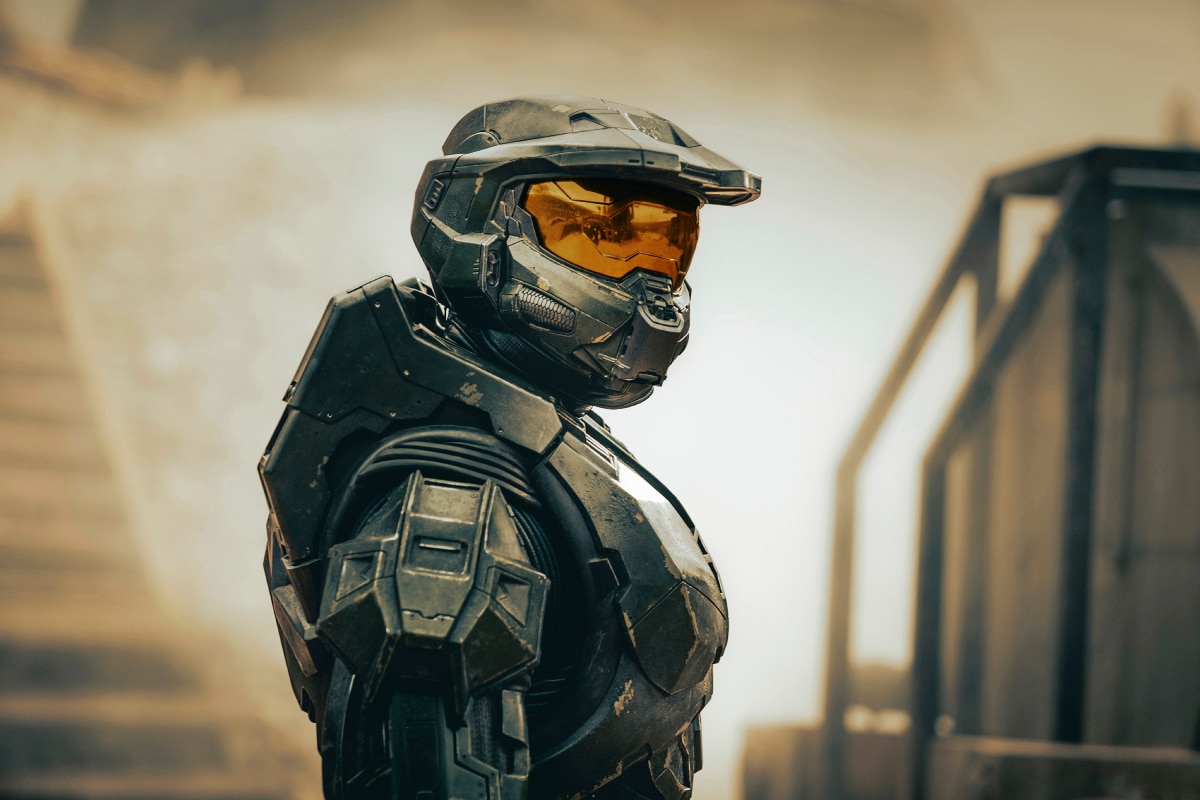Create a free profile to get unlimited access to exclusive videos, sweepstakes, and more!
'Halo' creatives talk shake-ups, the helmet question, Season 2 & new showrunners
Executive producers Kiki Wolfkill and Steven Kane reveal "creative debates" that happened along the Halo way.

In the almost decade-long development of Halo into a live-action project, there have been myriad impressive names who wanted to take a crack at adapting the global video game juggernaut. From Peter Jackson and Neill Blomkamp to Steven Spielberg, they've all had their hands on Master Chief in some capacity. When audiences finally get to see the 9-episode Halo streaming series, which debuts March 24 on Paramount+, the final result comes from an evolving collaboration amongst Amblin Television, Showtime, Paramount, Microsoft's Halo brain trust, 343 Industries, executive producer Kiki Wolfkill, development executive producer Kyle Killen (Awake), and executive producer/showrunner Steven Kane (The Last Ship).
Joining the show in March 2019, Kane tells SYFY WIRE that even after years of work there was still a lot that hadn't been decided when he joined Killen in the writer's room. But one thing was agreed upon after a mountain of script drafts, which was a definitive narrative spine for Season 1.
"What [Kyle] did that was great was that he took the giant [Halo] world, 20-years in the making with a canon that is both deep and wide, and he said, 'Let's tell this kind of story,'" Kane says of Killen's decision to make the series about the Master Chief character figuring out who Master Chief is outside of his Spartan Program programming. "And I think that was a really smart choice."
In the series, Master Chief Petty Officer John-117 (Pablo Schreiber) is still the famed Spartan super soldier that fans of the Halo franchise have played for decades, but now there's a real man inside the armored suit for audiences to come to know and understand. Figuring out John's ultimate journey of independence was what Kane had to figure out with his writer's room, with the approval of franchise stewards, 343 Industries.
"I think there's a certain amount of respect that they expected and deserved which I wanted to give them from the get-go," Kane says of his working relationship with the Halo IP team. "I wasn't going to jump in there and say, 'I want to have Master Chief do these terrible things and then this character do this thing which would just besmirch what they built over 20 years.'"
But Kane admits there were a lot of conversations about details and world-building that took a lot of time and energy. "Every day, I wouldn't call them battles but there were questions and debates that come up when you're building a show this big," Kane explains. "When you're playing the game, you are the Master Chief and there's a lot of things you don't have to think about. But when you're doing a TV show, you need to know what are they wearing when they're off duty? What does the house look like? What's the music that's playing sound like?"
And then there's even bigger questions for a live-action series, like does Master Chief get to take off his face covering helmet that is so synonymous with his tactical armor, so the actor underneath can be seen? As it turns out, that question has been plaguing the creative teams going back to the beginning when Halo was being developed as a movie with Blomkamp and Jackson attached.
"The decision [about the helmet] had been made before I even got there," Kane reveals. "But it's a decision that goes back actually a decade. I'm telling you what I know anecdotally because I wasn't there, but the stories I heard was there were fights even back when Blomkamp and Jackson didn't want the helmet to come off. They were going to be purists about it."
Kane says the streaming series decision to reveal John underneath the visor for significant periods was always the intention. "All credit here goes back to Kyle too, which is his story about finding the human inside the armor. If you make the story point about taking the helmet off an important story point, and you make it a monumental moment, you can bring the audience along with it."
And now with the series finishing post-production on Season 1, the next big Halo decision has happened, with former Fear the Walking Dead co-executive producer David Wiener taking the showrunning reins from Kane for Halo Season 2.
With Kane preferring to consult, Kiki Wolfkill of 343 says Season 1 of the series helped them create an infrastructure that could smoothly weather such a key transition. "Thankfully, we have a very strong creative team and a lot of continuity there," Wolfkills tells SYFY WIRE. "It's a lot for David Wiener to catch up on, but thankfully, it's a great crew. It's a great set of creatives. And what's so Halo about the experience of creating the show is that yeah, it was intense, but we came out the other side feeling like we'd been in battle together. I think that sense of camaraderie and trust, it was a pretty incredible personal experience. And not unlike, frankly, making a game in terms of you're knee deep in it for a long time and and you're in the trenches together. You have each other's back."
Halo the series debuts today on Paramount+ with new episodes every Thursday.


























